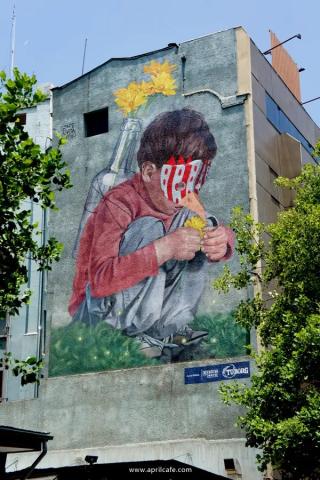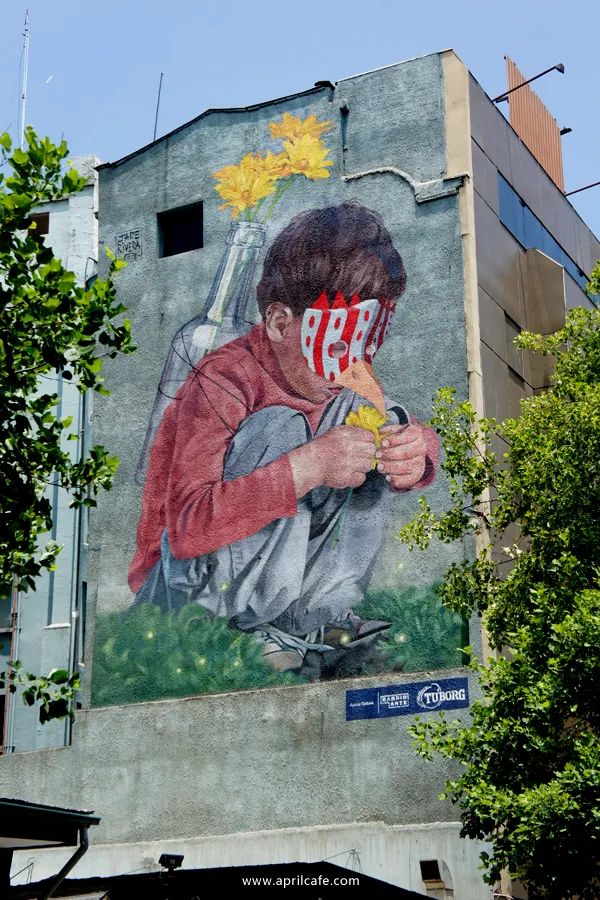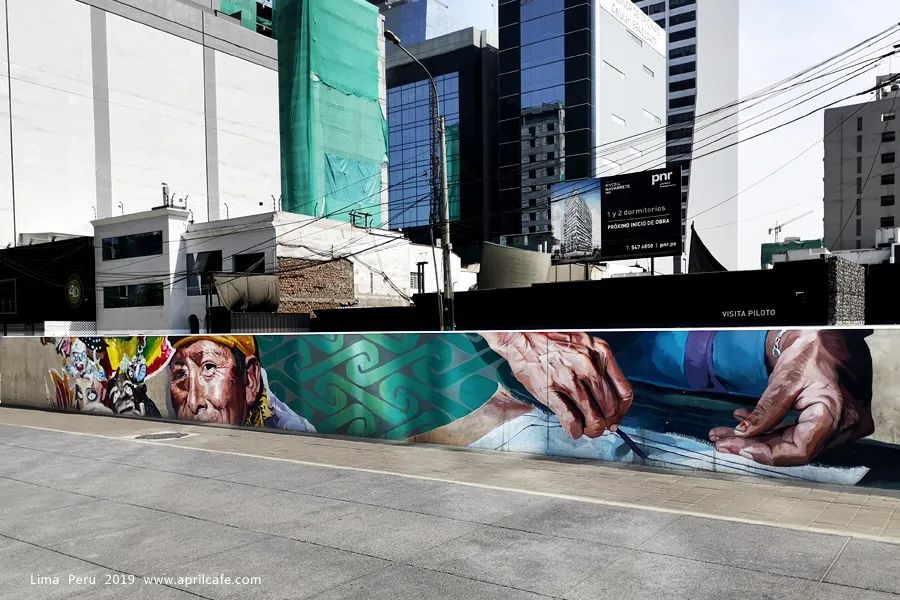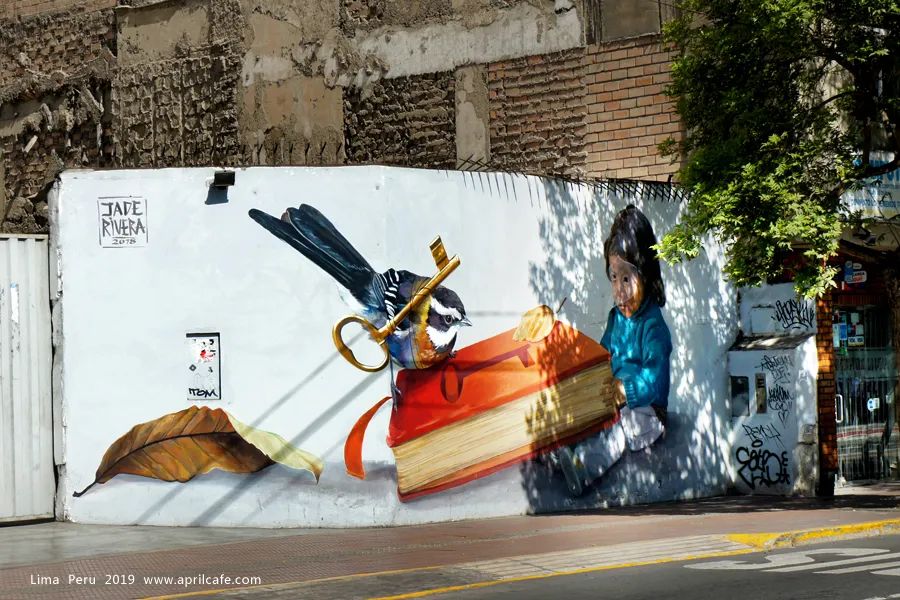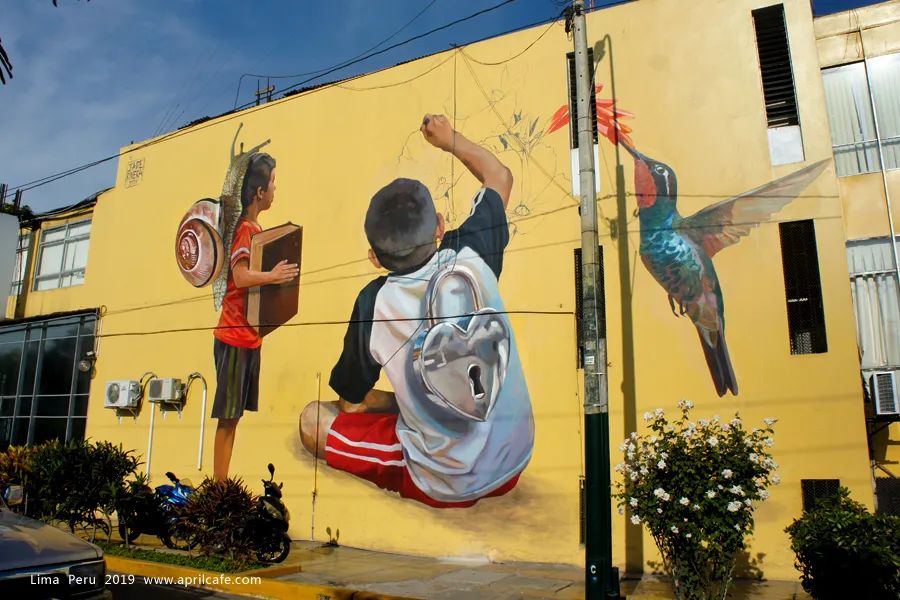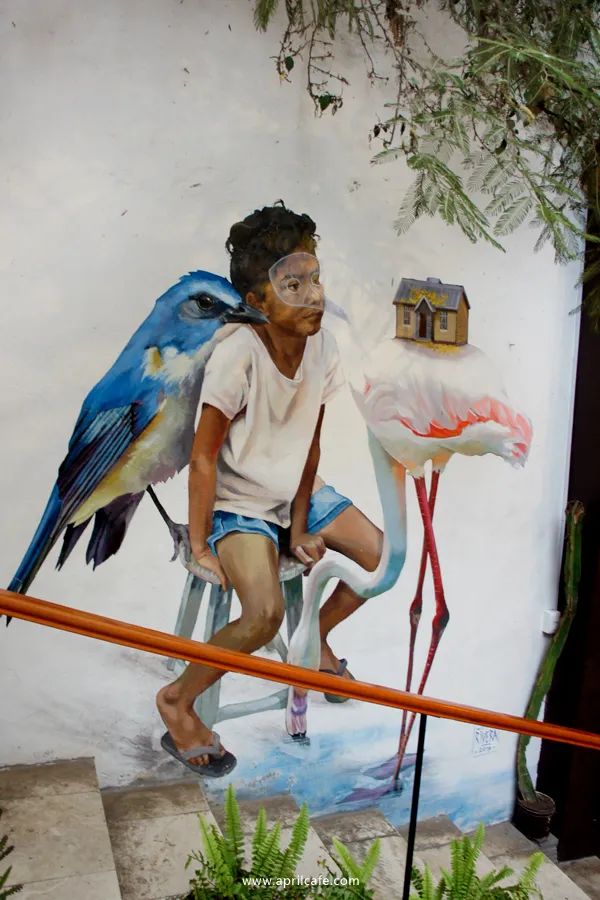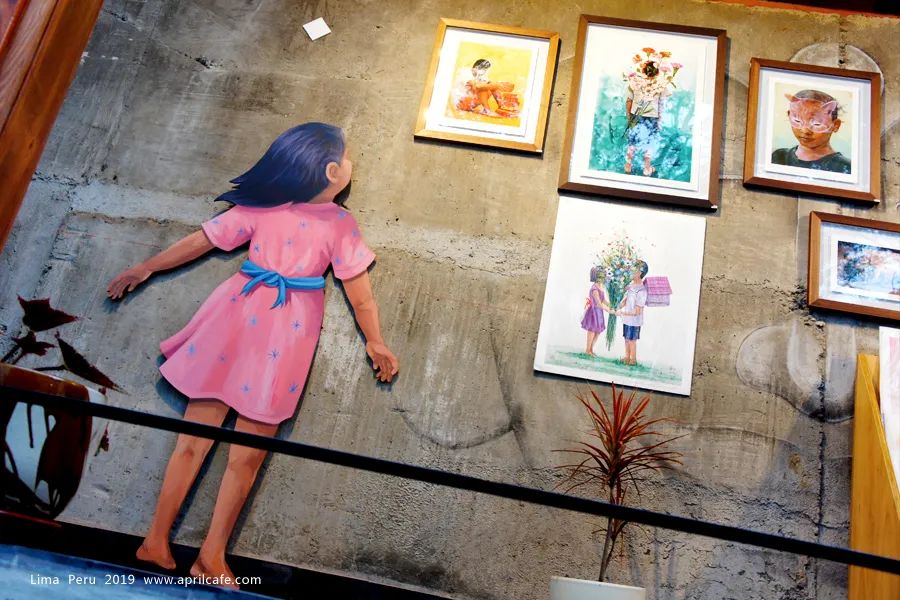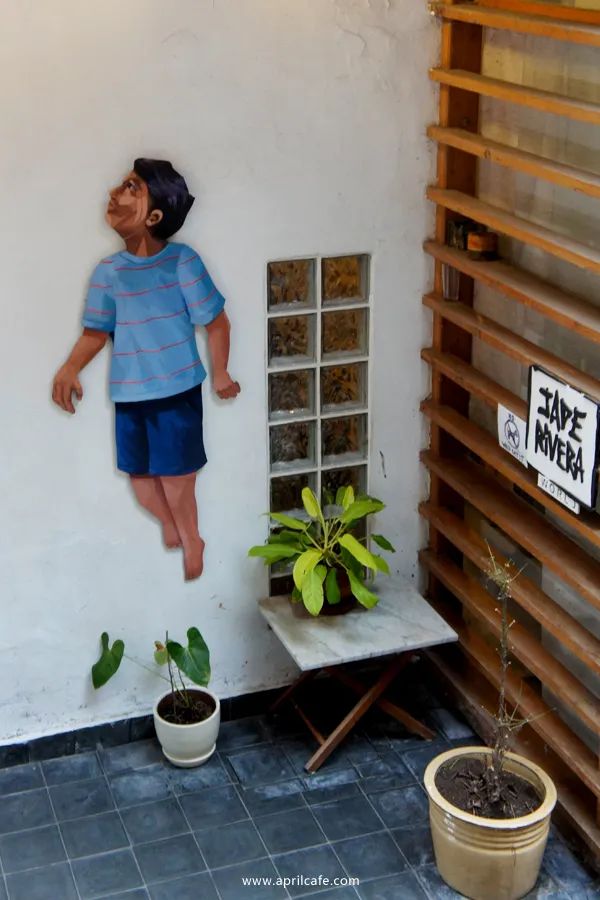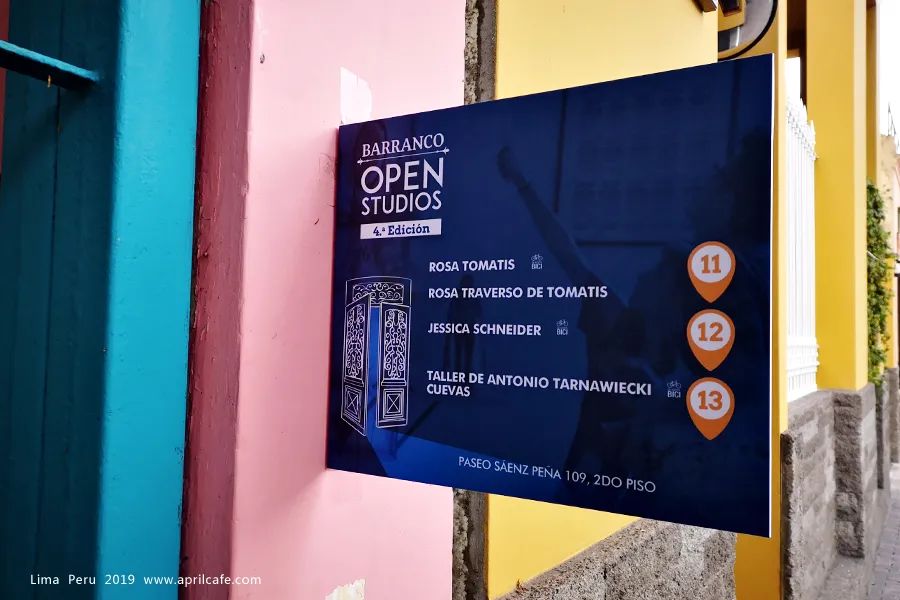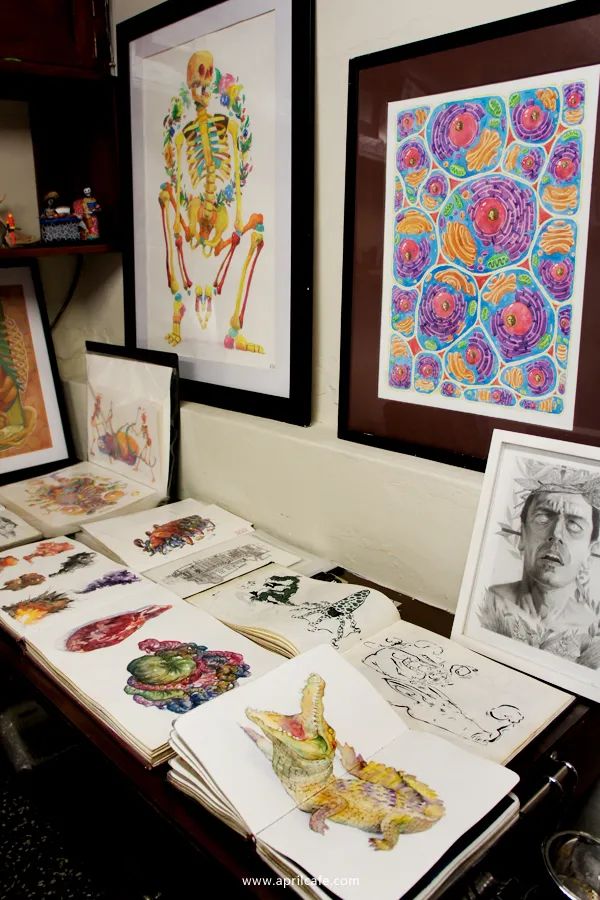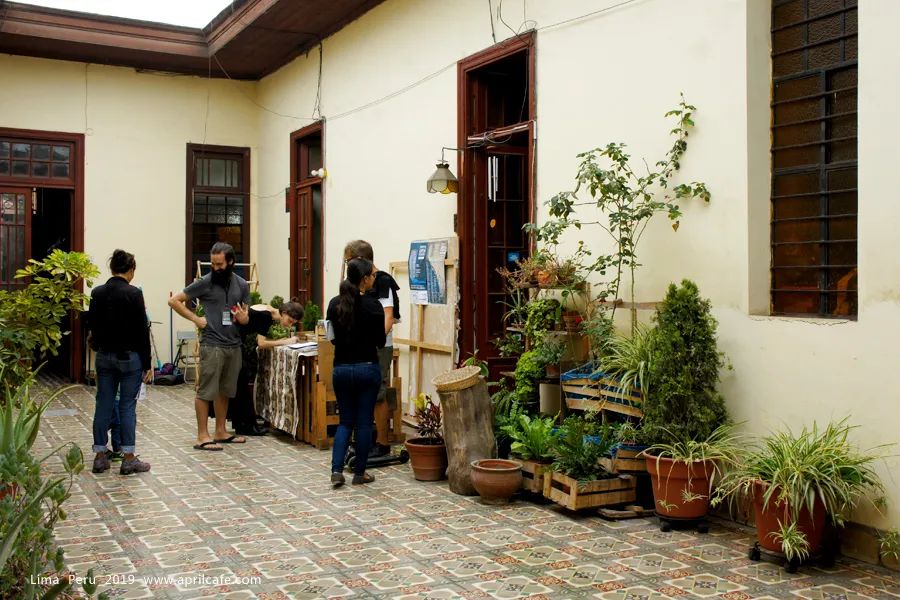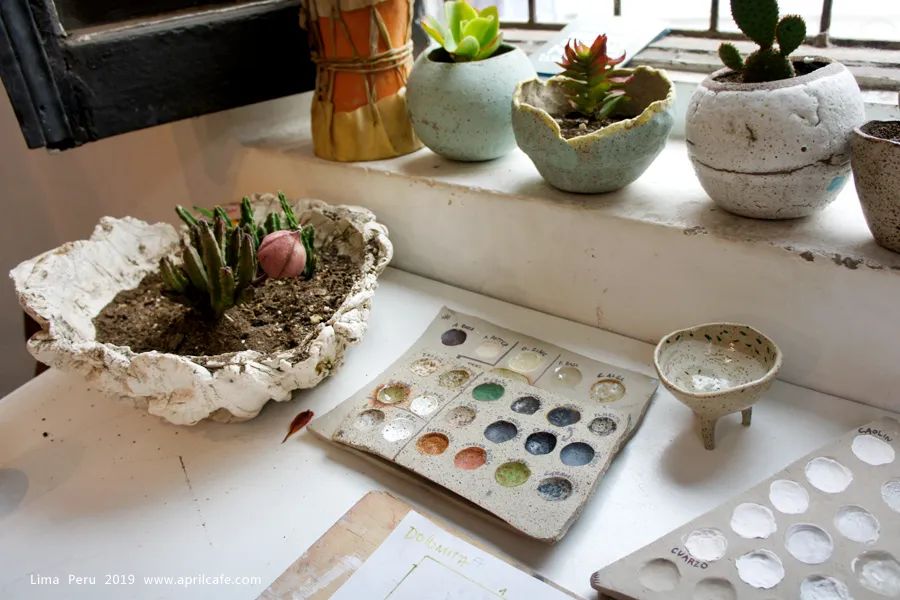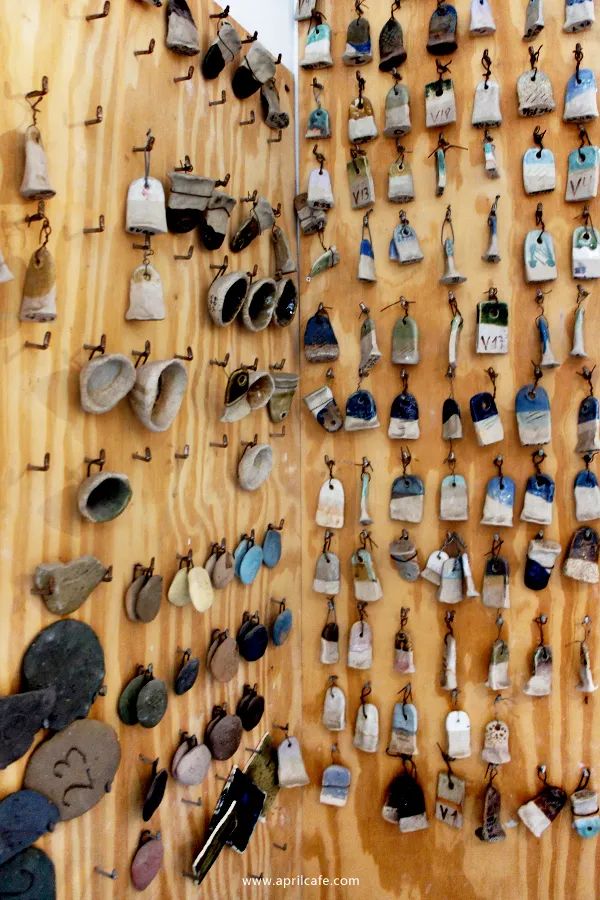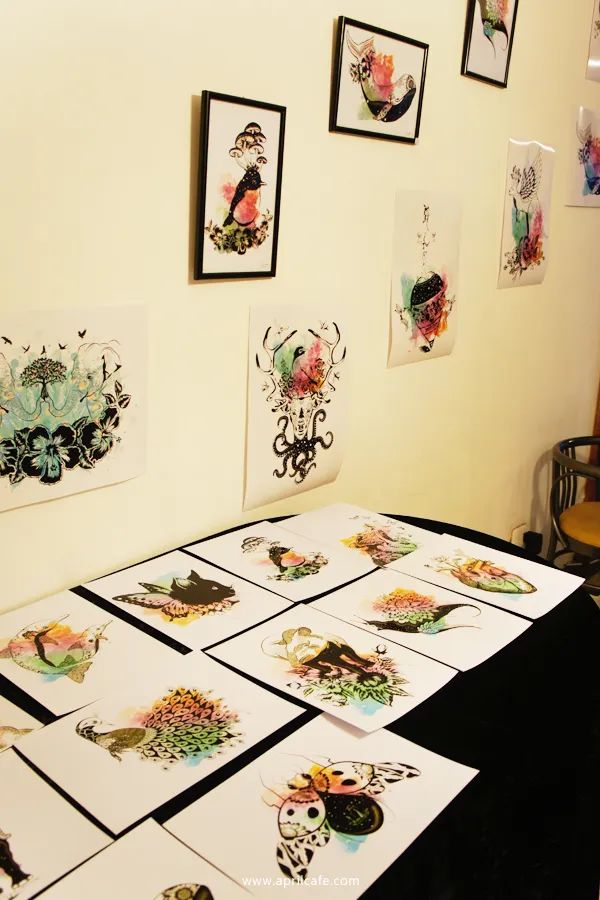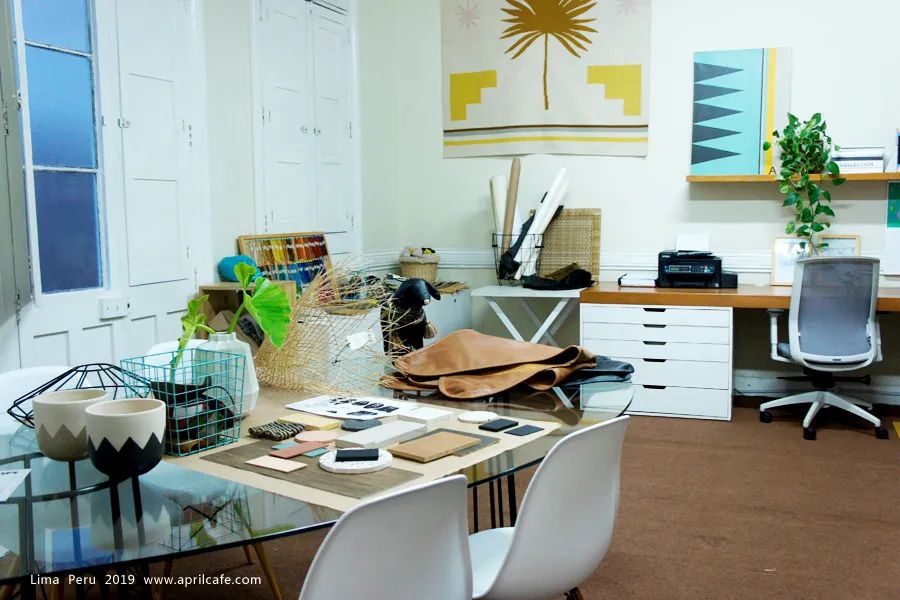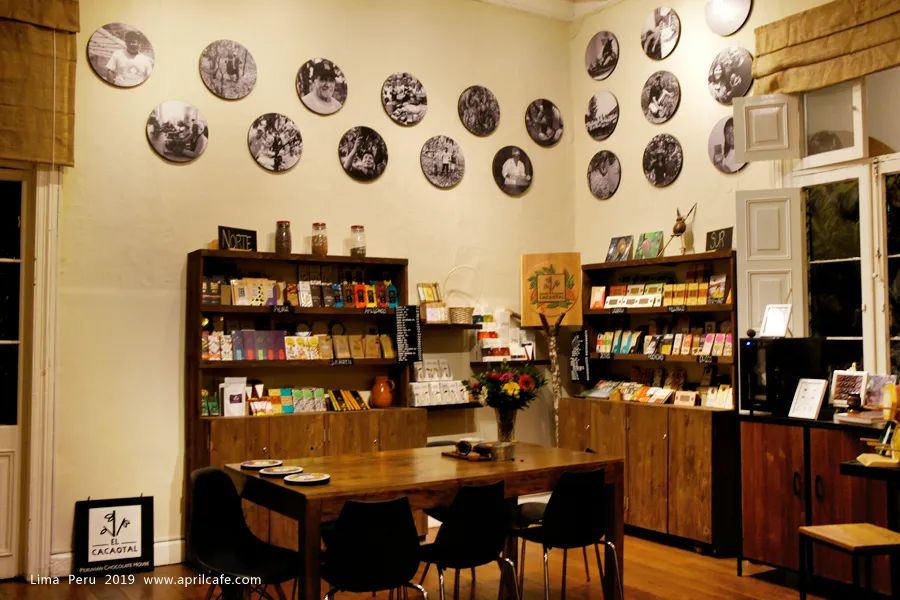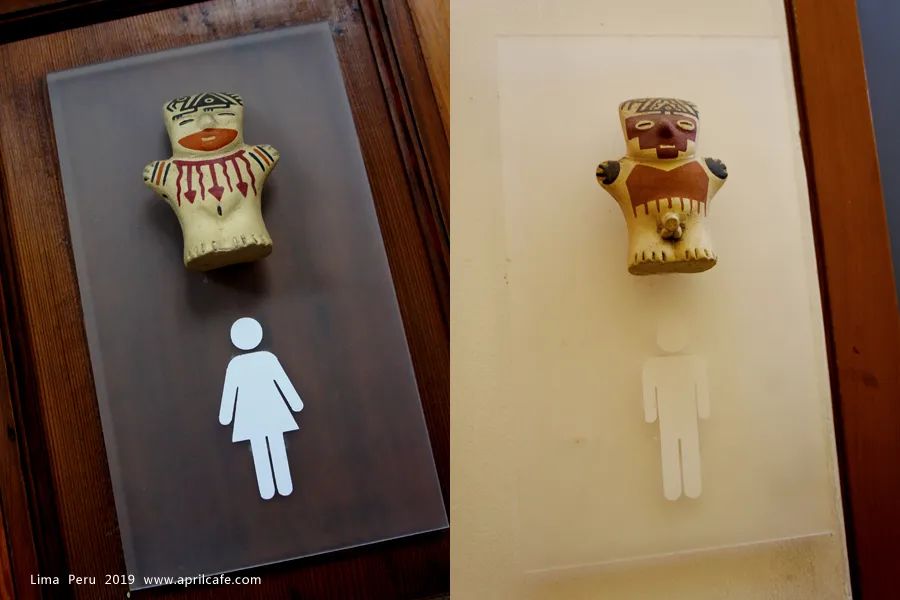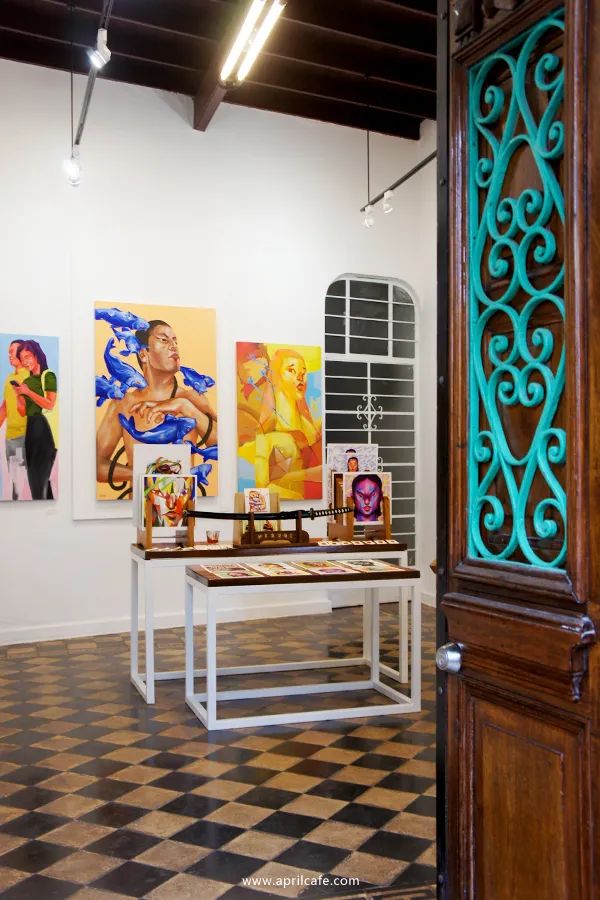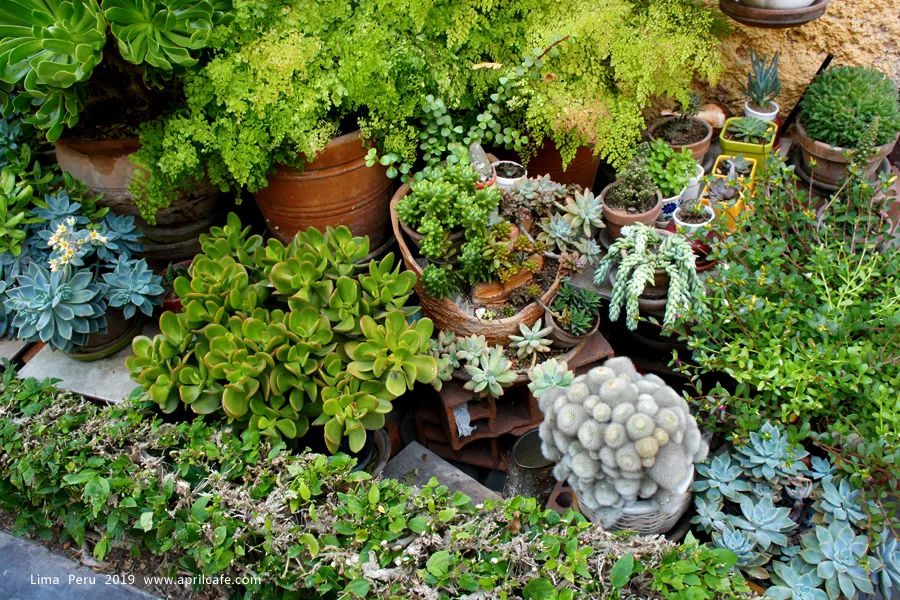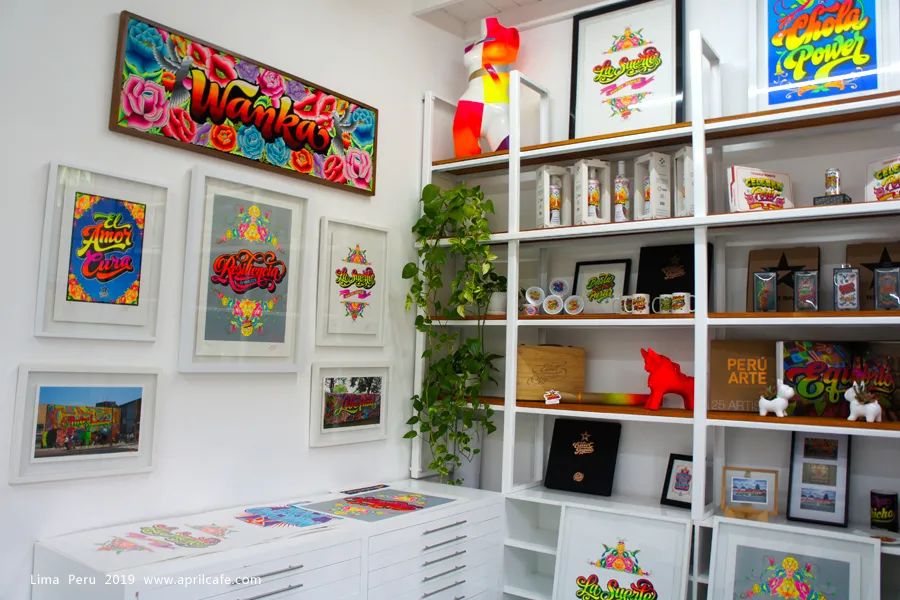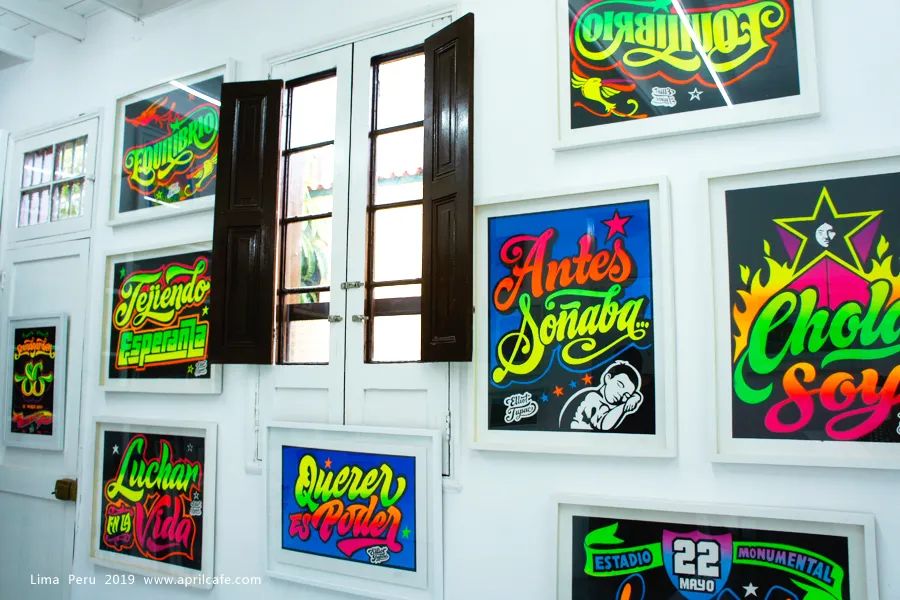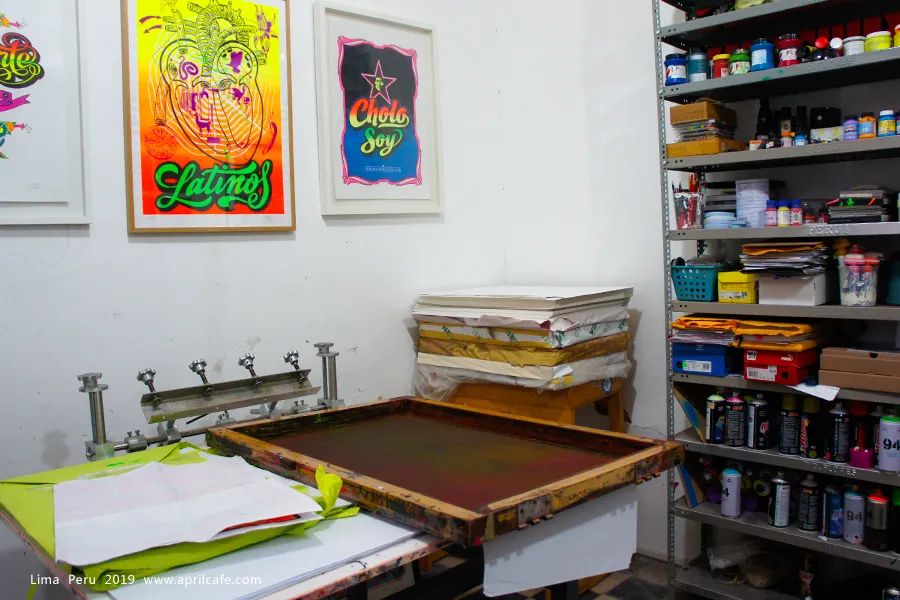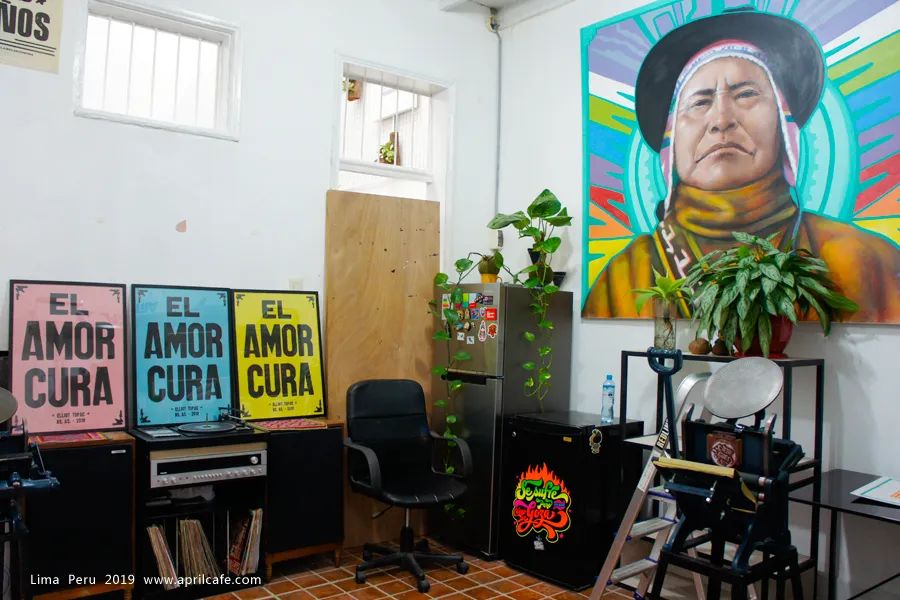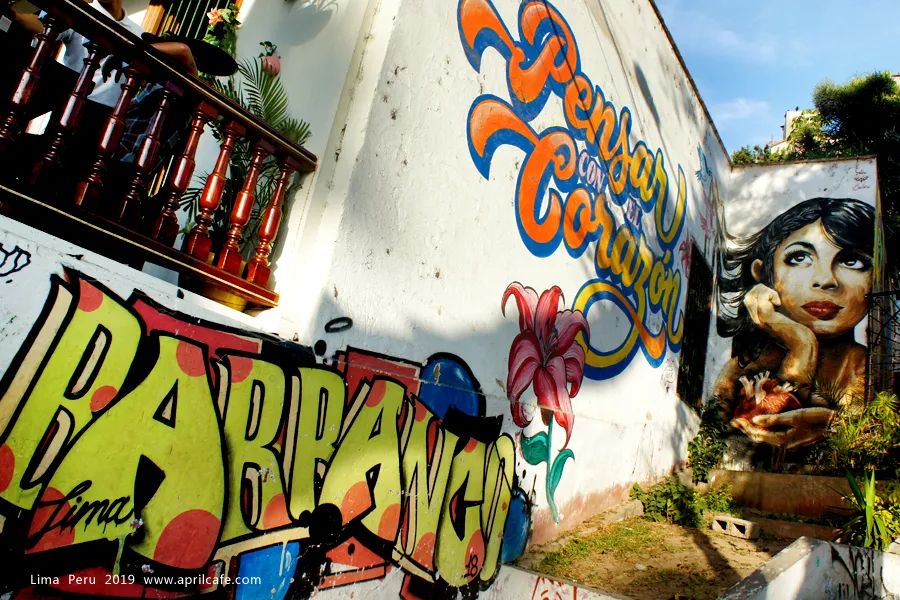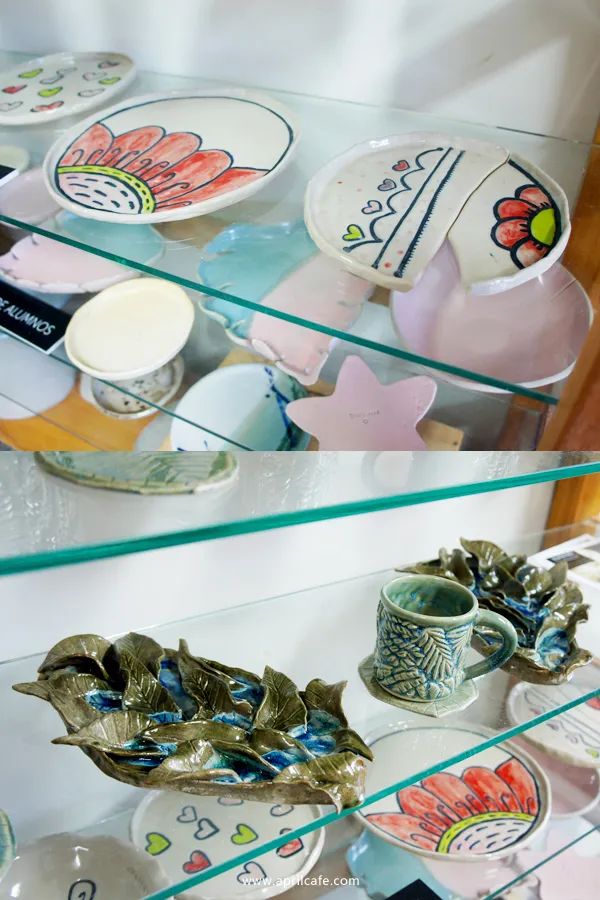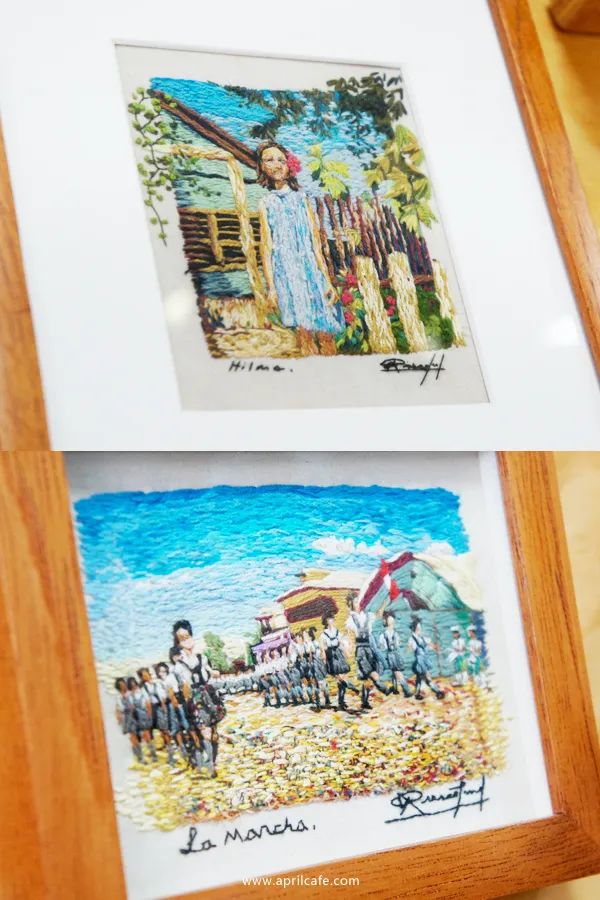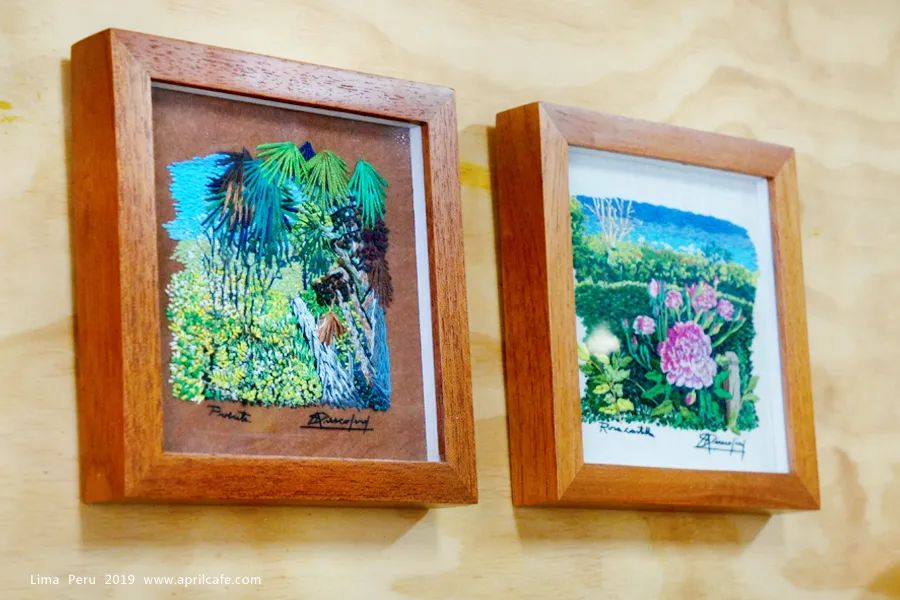This is a mural we saw on the streets of Santiago, the capital of Chile, in 2018, called "Buscando la verdad (Seeking the Truth)". It left a deep impression on us at the time, and we also remembered the work of this Peruvian painter. Name Jade Rivera.
When we arrived in Lima, we first saw his works in the San Isidro district. However, these two paintings were painted in 2017 to express the theme of Peruvian multiculturalism, which is different from his usual style.Jade Rivera's paintings often include images of children and birds. Birds symbolize home, nature or the earth, and people wearing bird masks symbolize the humans who need to care for and protect them.This one is called "La llave (The Key)".We saw unfinished works with similar themes in Barranco. Every time we go to Barranco, we see more colors on them.The girl holding the keys is on the wall across the street.Jade Rivera has loved art since she was a child, but she has not received professional art training. In 2015, he won first place in the "Las Paredes Hablan (The Walls Speak)" mural competition held in the Barranco district.This is a mural called "El hogar de un suspiro (House of Sighs)" that Jade Rivera was invited to create under Puente de los suspiros (Bridge of Sighs), one of Barranco's famous attractions. However, because it is next to a popular attraction, the mural was also seriously damaged.There is a line of text on the boy's shoulder in the painting: "Mi primer amor tenía doce años y las uñas negras. (My first love was when I was 12 years old, and my nails were black. )" , which comes from the poetic novel "La casa de cartón (The Cardboard House)" by Peruvian poet and writer Martín Adán. The book records the writer's experience living in Barranco as a teenager. It is the first work published by the author when he was twenty.After entering through the small door next to this painting, there is a unique world. There is a small courtyard inside, which is a small shop selling Jade Rivera's works.However, when we tried to find his studio for a visit based on the map, we were turned down because it was too early.The reason why you can go to the artist's studio to find out is because of an event called Barranco Open Studios.There are many artist studios scattered in the Barranco area, and dozens of studios are open to the public during the Barranco Open Studios in April and May every year. This event has been held for several years. After getting the map, you can follow the map to visit. There will be such signboards at the entrances of studios open to the public, so there is no need to worry about entering by mistake.This is also a good opportunity for tourists to understand the life of local people and take a close look at the environment where artists live and work.Of course, you can also enjoy many original works of art.You can also communicate directly with the artist face to face.The inspiration book displayed on the table can also be opened and read.Not only paintings, but also ceramics, textiles, sculptures and other design works.Not all studios have storefronts on the street. If you hadn't encountered such an event, you wouldn't have had the opportunity to walk into the small buildings and courtyards where locals live.Some design studios are spacious and atmospheric.Some handicraft workshops are small and interesting.This is an architecture studio converted from a residence. In addition to the regular office area, there are many art installations in the backyard, and painting tools are prepared in the front yard for visiting children.I also saw the gallery of street artist Pésimo. The Japanese sword on the table in the middle of the door showed recognition of my ancestry.The most impressive thing for us was of course our visit to the studio of Peruvian artist Elliot Túpac. We once saw his work "Vive Tus Sueños (Live Your Dreams)" at the San Miguel Open Air Museum in Chile.Later, I saw his painting "La libertad es responsabilidad (Freedom is Responsibility)" at the Recoleta Cultural Center in Argentina.His studio is hidden in this quiet courtyard away from the downtown area.Elliot Túpac was born into a traditional craftsman family in Huancayo, a city in the Andean plateau of central Peru, and had no formal art education. Most of his works are silk screen printing, and the eye-catching fluorescent letters are very recognizable. It is called "Chicha art" that uses traditional colors for modern design.Chicha (Peruvian cumbia) is not only a drink in Peru but also a genre of music. In the 1940s, Peru's land reform policy caused an influx of immigrants from the plateau and tropical areas to Lima. In the 1960s and 1970s, new immigrantswho wanted to have a cultural voice were inspired by the music of ColombiaCumbia, based on the Andean indigenous music. Electric guitars, synthesizers and other modern instruments were introduced on the Internet, integrating a new Chicha music style.The most influential among them is Los Shapis, a band founded in the 1980s. The band members like to wear costumes with traditional Andean rainbow colors. With the popularity of Chicha music, the performance advertisements Posters also form this color style. However, Chicha from the streets is an eyesore to the elite. These screen-printed posters are put up at night and will be cleaned up by city managers in the morning, so artists will continue to design more eye-catching colors. Poster with larger font size. Chicha embodies the conflict between indigenous culture and colonial culture, and has gradually become synonymous with Peruvian indigenous culture. A new generation of artists is working hard to revive Chicha art.Elliot Túpac has expanded the medium of Chicha art from prints to street murals, and has cooperated with many brands and entered shopping malls and art spaces.When we walked into Elliot Túpac's studio, our first impression was that it was clean and tidy.Knowing that we had just arrived from Chile, he specifically pointed out to us that this poster on the wall was created for the Chilean Lollapalooza music festival.
Elliot Túpac also writes the names of visiting guests. Seeing that we are Chinese, he specially found a box of brand new brushes and wrote the children's names in Chinese characters.Seeing that it might be inconvenient for us to hold it, we cut it and put it in a plastic bag.Most of Elliot Túpac's murals in Lima were collaborated with Decertor. Their works in Lima's historical center were erased by the then government during the 2015 movement. We only saw the middle painting "Pensar con" in Barranco. el corazón (think with the heart)”.At Barranco Open Studios we also visited a ceramics studio.Although the map indicated a ceramics studio, I didn’t expect to see some embroidery works.There happened to be an embroidery teaching activity going on when we entered.Seeing that the child was following with great interest, the teacher gave her the embroidered bandage used for demonstration in her hand to try.However, the two-day open day was too short, and we were not able to visit them all. 